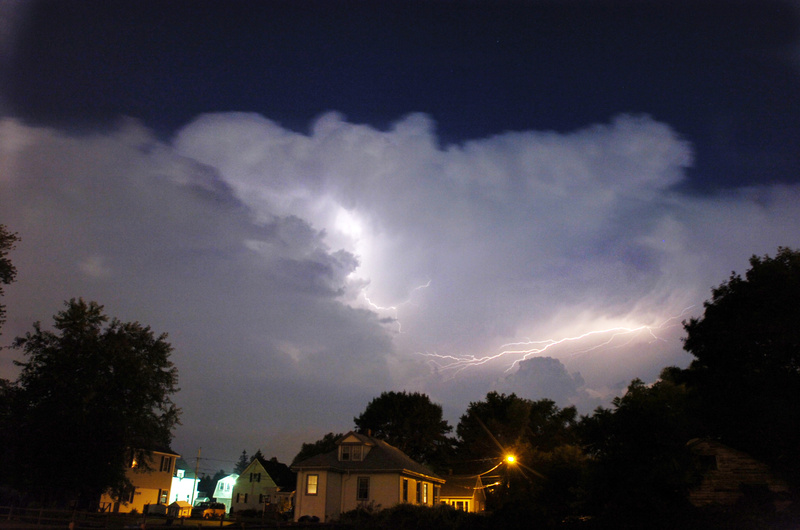Q: What do I need to know about lightning to help me stay safe?
A: We’re on the verge of summer. That means it’s more likely that people are going to be more comfortable going outside. Unfortunately it also means that thunderstorms are more likely.
And that means there’s a very real danger from lightning. It’s one we have to worry about no matter what activity we do outside. Since the safest place to be during a thunderstorm is a building, hiking and paddling present some unique challenges. Those are activities that can take you far away from safety and put yourself in vulnerable locations.
The National Weather Service (NWS) defines a safe building as “one that is fully enclosed with a roof, walls and floor, and has plumbing or wiring.”
If the building is struck, the electrical charge will be dispersed among the metal wiring and plumbing, and into the ground.
Hikes tend to take you to remote locations — which can be defined as a place far from safe buildings. And if you’re on an exposed mountain or ridge, you’re very vulnerable.
Kayaking and canoeing generally take place on bodies of open water. Since lightning seeks the tallest object in an area, that would be you sitting in a boat.
So how are you going to be safe out there? Again, it all comes back to planning. Know the weather forecast. If there is a 30 percent chance of a thunderstorm, make new plans. Don’t go out. You are not safe anywhere outside.
If the forecast doesn’t include thunderstorms, you’re not necessarily in the clear. Storm systems can materialize and move into an area quickly. Again, good planning would mean having a radio that gets NWS forecasts and alerts. There are dedicated weather radios, transistor radios with weather bands and apps for your smartphone. Check it periodically to make sure you’re not in the path of a storm.
If you’re out and you find out a storm is coming, you see dark clouds building or hear thunder, find safe shelter. Remember safety is a relative concept. You can’t be totally safe but can lessen the chance of being struck.
Don’t stay exposed: If you’re on the water, head for shore. If you’re on an exposed part of a mountain or hill, head for a treeline.
Keep moving: Once you have gotten out of an open area, find shelter. Trees aren’t shelter. You’re still very vulnerable. The NWS recommends finding a building or car as quickly as possible.
Avoid tents and open shelters: Simply having a roof above you will keep you from getting wet. But picnic pavilions and tents don’t offer any protection from lightning.
Get in the car: Your car is a really good option. All that metal does a good job of dispersing the charge from a lightning strike. In many cases making your way back to the car is your best bet.
First aid: Lightning strike victims often suffer cardiac arrest. You’re going to need to administer CPR and get help. Even if a victim doesn’t need CPR, you need to get them to a hospital quickly. The strike can cause neurological damage that needs to be diagnosed.
Carl Natale is a Registered Maine Sea Kayak Guide and freelance writer. You can read more about his adventures at CarlNatale.com and send questions to:
outdoorsman@carlnatale.com
Send questions/comments to the editors.



Success. Please wait for the page to reload. If the page does not reload within 5 seconds, please refresh the page.
Enter your email and password to access comments.
Hi, to comment on stories you must . This profile is in addition to your subscription and website login.
Already have a commenting profile? .
Invalid username/password.
Please check your email to confirm and complete your registration.
Only subscribers are eligible to post comments. Please subscribe or login first for digital access. Here’s why.
Use the form below to reset your password. When you've submitted your account email, we will send an email with a reset code.